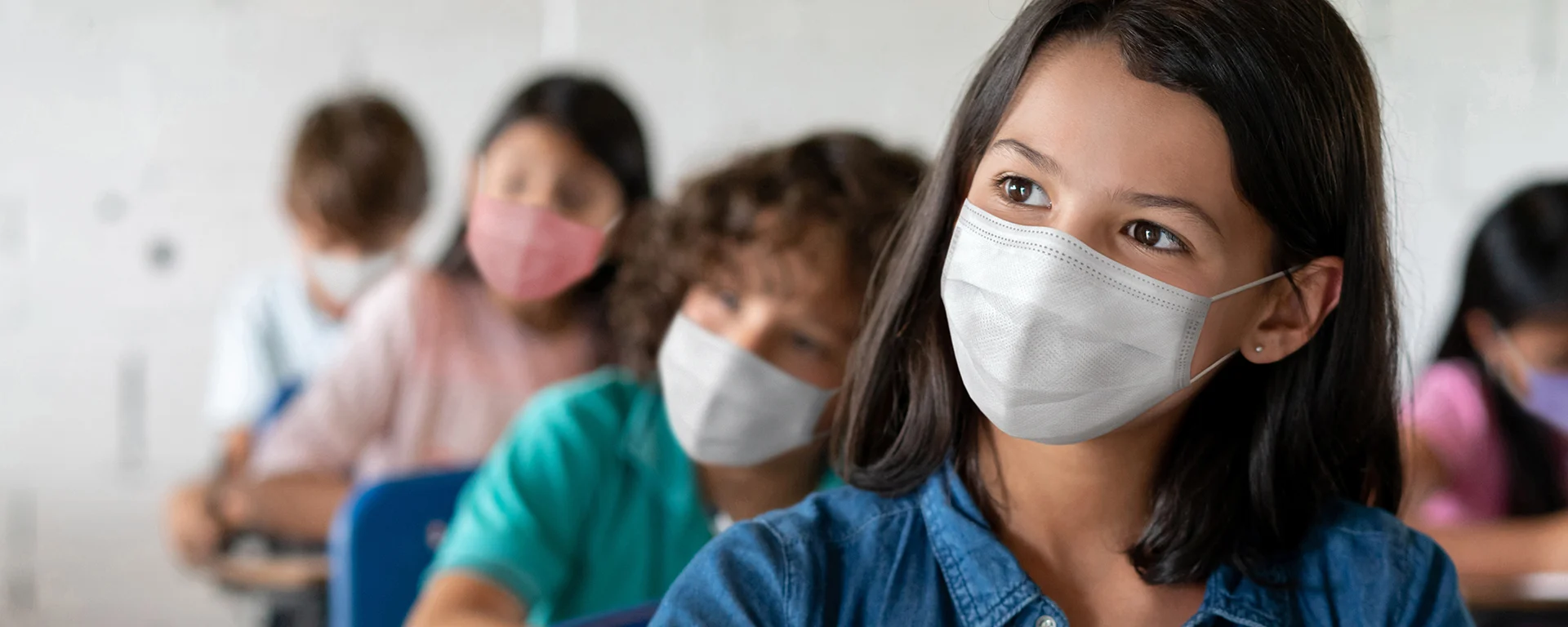What’s Your IAQ?
There’s no perfect way to check if the air you’re breathing is clean. A CO₂ monitor may be your best bet, though — and it’s easy to do.
Wouldn’t it be great to be able to walk into a room and know right away whether the air is clean? No more wondering whether that restaurant has enough fresh air coming in the windows, or whether the heating, ventilation, and air-conditioning (HVAC) system in your kid’s classroom is working properly. There’s a tool that can help. It’s called a carbon dioxide (CO₂) monitor. It’s not a perfect solution, but as long as you understand its limits, it can be really useful.
What is CO₂, and why would we want to monitor it?
When we breathe out, we add a gas called CO₂ to the air. If there are lots of people in a room and not enough fresh air coming in, CO₂ levels increase quickly. CO₂ can be a problem all by itself. If there’s too much of it in the air, it can make people tired, give them headaches, and make it harder to concentrate and to learn.
It's also useful to know the CO₂ level for another reason. If there’s a lot of CO₂ in the air, that often means there’s a lot of people’s breath in the air — and people’s breath can carry viruses.
How much indoor CO₂ is okay?
There isn’t a hard-and-fast rule for this. Clean outdoor air usually has about 400 ppm (parts per million) of CO₂, and the CDC says 800 ppm can be used as a number that represents good ventilation. However, it’s normal for levels to go up and down. CO₂ itself won’t cause serious health problems until it hits about 5,000 ppm. But in general, the closer your levels are to outdoor air, the better. The infographic below, developed by HVAC engineer Joey Fox and graphic designers Ana Sofia Pinho, Droplet Diaries, and Alisa Grossutti, includes a good overview of CO₂ levels.
In the past, when people wanted to keep track of CO₂ levels in buildings, they’d install big systems that worked with the HVAC. You can still do that if your organization has to monitor a whole building and you have enough money. But these days, you can also buy a good portable CO₂ monitor for under $300 that’s about the size of a pack of cards. To get the most useful readings, the monitor should be placed at a height of about 3-6 feet (1-2 meters) above the floor, far away from windows and air-supply vents, and at least 6 feet (2 meters) away from people or open flames. (Want to have fun with your monitor? Breathe directly on it and see what happens!)
What CO₂ levels do and don’t tell you.
So far, we’ve been focusing on CO₂ because high levels can mean there’s a lot of people’s breath in the air. But indoor CO₂ levels can go up for other reasons too. Furnaces, water heaters, and stoves that burn oil or natural gas can give off CO₂. So can smoking.
Plus, it’s important to remember that CO₂ — and infected people’s breath — aren’t the only things that matter when it comes to keeping air clean. Other indoor and outdoor air pollution makes a difference, too. If the air outside isn’t clean, bringing more of it indoors doesn’t help your health.
Sometimes you need filtration, not ventilation.
We’ve all seen what wildfires can do to the air. When the sky is orange, no amount of ventilation is going to make your indoor air quality (IAQ) any better. And sometimes, your building — or the room you’re in — just can’t be ventilated very well. When that happens, you need a HEPA filter (high-efficiency particulate air filter). HEPA filters don’t remove CO₂. Instead, they remove “particulates”: tiny bits of stuff in the air, including ash, dust, and the tiny bits of water that viruses ride on.
The type and size of HEPA filter you need depends on the size of room you’re dealing with. The Harvard Healthy Buildings Portable Air Cleaner Sizing (PACS) tool from the Harvard T.H. Chan School of Public Health can help you figure out how big a HEPA filter you need for a given space, or how many filtering machines you need.
I keep a CO₂ monitor in my purse these days. When there’s a lot of respiratory disease going around (whether it’s COVID, flu, or respiratory syncytial virus (RSV)), it helps me decide whether I want to wear a mask when I’m in a public place like a store or a theater. It’s just another tool that’s helping me navigate the post-pandemic world.
This article was adapted from “Carbon Dioxide Monitoring for Indoor Air Quality,” by Peterborough Public Health, Ontario, Canada.






